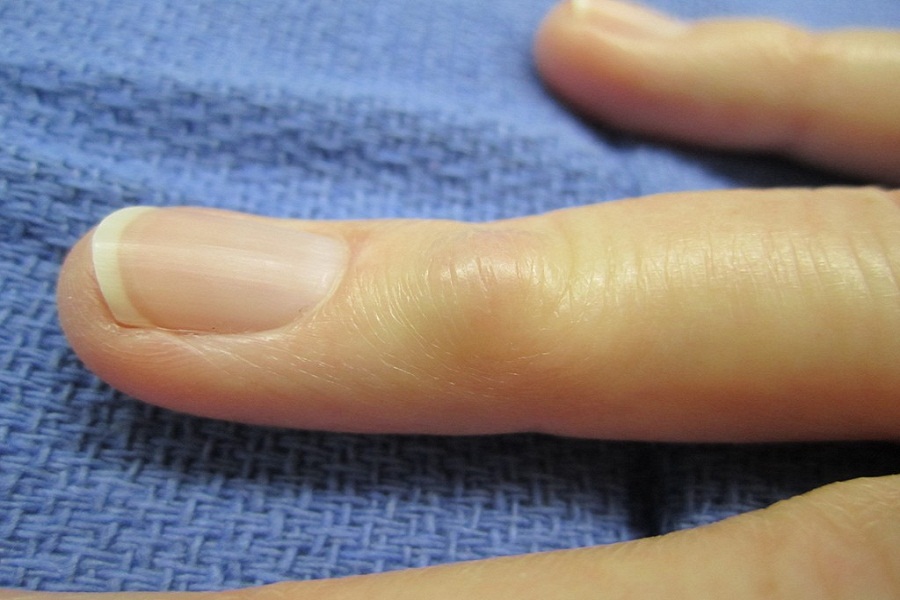
Published :
Updated :

The formation of a lump of nodules in the fingers and hand can be due to diseases like osteoarthritis or rheumatoid arthritis. It may also result from an injury. These lumps are benign, but some may indicate serious underlying conditions. Therefore, it is important to seek advice from medical professionals.
Some risk factors can increase the likelihood of lumps and nodules in fingers and hands. Elderly people are at a higher risk since they are often affected by arthritis of the hands.
A history of rheumatoid arthritis and osteoarthritis can also trigger it. Another important contributing factor is past trauma. If someone has broken a bond in the hand or finger, this may create scar tissue and put additional stress on the joints, causing a lump of nodules.
Many health conditions can give rise to different types of lumps in fingers and hands. Some common examples are-
Heberden's & Bouchard's nodes: Bony lumps near the fingernail are known as Heberden's, and similar swellings on the finger's middle joints are called Bouchard's nodules. They are usually painless but may be painful if inflamed.
Elderly people and people with arthritis are more prone to these nodules. Heberden's nodules are more common; about 60% of knee osteoarthritis patients have these. However, Bouchard's is linked to a more severe form of arthritis.
Ganglion cysts: These are clear fluid or gel-containing lumps. Common sites are the finger's base, finger joints and top of the wrist. The exact cause is not known, but may be due to mechanical damage or irritation. These can be painful or painless but not malignant and do not spread to other body areas.
Dupuytren's contracture: It is a thickening of the tissue under the skin of the palm of our hand. Over time, this may become a thick band or hard lump. Such a band may force the ring or the little fingers to move sideways, causing deformity.
Rheumatoid nodules: As the name suggests, these are secondary to that condition. Such nodules are joint adjacent, including finger joints. These manifest as free-moving lumps underneath the skin. The size may be as small as a pea or as big as a lemon.
There are other causes of a lump in the hands and fingers, but these are more common. Regardless of the cause, these patients may present with pain, deformity of the hand or joints, difficulty in moving the fingers, joint stiffness and tingling sensations.
Treatment entirely depends on what is causing the nodules. Some of these, e.g., ganglion cyst, Dupuytren's, etc., generally go away with time. Others may need some extra care.
There are certain features which necessitate immediate medical attention. These include severe painful swelling, deformity to the extent of making hand or finger motions almost impossible, and intense tingling or numbness, among others.
Physicians may suggest different approaches to manage the condition. Rest with medication and physical therapy are commonly applied. In extreme cases, surgery may be required.
The best thing we can do is to make sure the risk of a lump or nodule is minimised. To keep our bones and joints healthy, we should always eat a healthy, balanced diet containing plenty of fruits and vegetables.
To reduce stress on the joints, body weight should be kept within the acceptable limit for age and height. Regular exercise is quite crucial, especially for sedentary workers. Half an hour every day should be the minimum. Such exercise can take various forms, e.g., walking, biking, swimming or even yoga.
imtiazdmc@gmail.com


 For all latest news, follow The Financial Express Google News channel.
For all latest news, follow The Financial Express Google News channel.